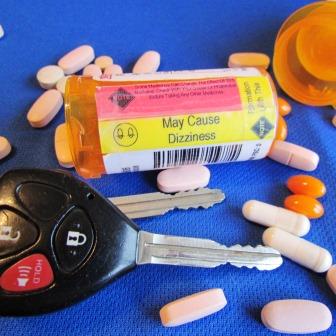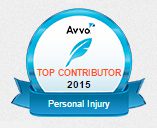
Driving on prescription drugs can pose serious hazards. The thought of impaired driving usually conjures images of drunk driving. Law enforcement officials and others for years now warned of dangers on the highway caused by mixing alcohol and driving.
Also, although sometimes controversial, the use of illegal drugs also presents the danger of impaired drivers and accidents.
At the same time taking prescription drugs, especially in combination, brings along its own potential for danger. That danger can include drowsiness, dizziness and lowered cognitive ability.
After a motor vehicle stop for impaired driving or after an at-fault accident I’ve heard people say well, it was a prescription given to me by the doctor. As if that makes it OK. But, if prescription medicine or multiple medications caused impairment, that fails to explain away the cause of the accident or vehicle stop.
What Drugs Pose Threats to Drivers?
Use of illicit drugs including cocaine and methamphetamine makes drivers reckless and aggressive. We’re not talking about those. Opioids top the list of prescription drugs that should be avoided while driving. Prescription opioids, primarily used for pain relief, can cause dizziness, drowsiness, and sedation. As a result, these and other side effects often reduce one’s ability by severely decreasing alertness and concentration.
Popular anxiety medications or benzodiazepines carry their own risks. For example, medication in this category, also prescribed for anxiety, include Xanax, Valium, Klonopin and many others. Side effects include dizziness, drowsiness and poor coordination. Such medication can increase the risk of traffic accidents from 60 to 80 percent. They can also increase accident responsibility by 40 percent.
What that means is that just because a driver is taking a medication prescribed by a doctor doesn’t get them off the hook. The fact that it’s a prescription does not mean the driver is not at fault for the accident just because the impairment was caused by a “legitimate” drug.
In fact many drunk driving laws prohibit impairment of any nature. New Hampshire’s drunk driving law specifically refers to “prescription drug, over-the-counter drug, or any other chemical substance”. As a result that phrase makes it illegal to drive if those substances impair a person’s ability to drive. Similarly, the Massachusetts drunk driving law specifically refers to “depressants or stimulant substances” and then refers to the controlled substance act.
Why are Prescription Drugs So Dangerous?
Probably greater danger comes not from use of any one prescription which may or may not pose a risk while driving. Often people end up with multiple medications, the combined effect of which can in fact be deadly.
Consider a Massachusetts case in which a driver received prescriptions for Oxycodone, Zaroxolyn, Prednisone, Flomax, Potassium, Paxil, Oxazepam, and Furosemide. Bad enough the medications individually posed side effects of drowsiness, dizziness, lightheadedness, fainting, altered consciousness and sedation. Used in combination the medications carried the potential for additive side effects more severe than the side effects resulting from separate use.
The 75-year-old under the effects of the above medication lost consciousness, drive off the road and struck a pedestrian standing on the sidewalk.
The court held that the combination of medications, along with the man’s underlying conditions, created a foreseeable risk of harm. The foreseeable risk of harm included all those who could be involved in such a predictable accident including other motorists, bicyclists and pedestrians. On the unique facts of that case the negligence could even be tracked back to the physician who prescribed the list of medications without warning the patient of the potential side effects.
Who is Most Likely to Drive Impaired on Prescription Meds?
An expert in the above case testified that sedating effects of prescription medications taken individually or in combination can be more severe in older patients. Elderly and chronically ill patients require warning of the potential side effects of prescription medications and on their ability to drive. At the same time, teenagers are more likely to experience driving problems brought on by use of prescription medications while driving than other age groups.
Teens possess less driving experience. Just starting their driving years they carry fewer memories of tough situations and are more likely to underestimate or not recognize dangerous situations. Combine the newness of driving – or lack of driving real-life experience – with a haze of prescription medication and the risk of accidents increases. A group that studied the issue listed these factors underlying this danger:
- Teens more likely to speed.
- More likely to leave less distance between vehicles.
- Teens have less experience.
- Less likely to recognize & react correctly to dangerous situations.
National Institute on Drug Abuse.
Overall, car accidents make up the number one cause of death among those between the ages of 16 and 19. So, adding prescription use to that already unfortunate reality presents enhanced need to seriously look at prescription drugs and driving
Driving on Prescription Drugs Overall
Experts define drugged driving as driving a vehicle while impaired due to the intoxicating effects of recent drug use. It potentially makes driving any vehicle unsafe, just like drinking and driving. As pointed out by the court in the Massachusetts case, driving while on a mix of prescription medications, or any one with severe side effects, poses a serious risk to the driver, passengers, others on the highway and pedestrians.
Here is more on a related topic: Driving High: Are Pot Smokers Causing More Accidents?
After an accident it pays to make as many observations of the other driver as possible. Impairment by alcohol and/or illegal drugs may or may not be obvious. Signs of those driving under the influence of prescription medications might not always be as obvious. If you are able to do so after an accident, speak to the other driver, observe their speech, their eyes, their ability to walk and reach for license and registration.
The author of this article is Andrew D. Myers a personal injury attorney in Massachusetts and New Hampshire.
If you have been hurt in an accident through no fault of your own, we can help.
Sources:
- Coombes v. Florio, 450 Mass. 182, (2007). Massachusetts Supreme Judicial Court Case.
- Drugged Driving, National Institute on Drug Abuse, Revised March 2019.
- Five Reasons Driving on Benzos is Just a Bad Idea, American Addiction Centers, 2019, Drugabuse.com.
- Massachusetts General Laws, MGL c. 90, § 24, (1) (a) (1).
- New Hampshire Revised Statutes Annotated, RSA 265-A:2. I. (a).
Visits: 95




